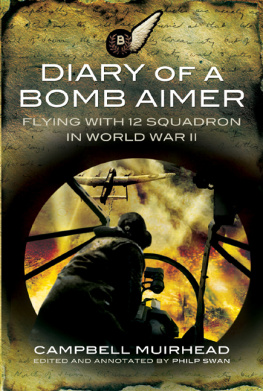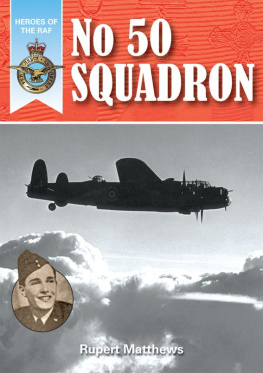


Published in the United States of America and Great Britain in 2023 by
CASEMATE PUBLISHERS
1950 Lawrence Road, Havertown, PA 19083, USA
and
The Old Music Hall, 106108 Cowley Road, Oxford OX4 1JE, UK
Copyright 2023 Richard Phillip Lawless
Hardback Edition: ISBN 978-1-63624-205-7
Digital Edition: ISBN 978-1-63624-206-4
A CIP record for this book is available from the British Library
All rights reserved. No part of this book may be reproduced or transmitted in any form or by any means, electronic or mechanical including photocopying, recording or by any information storage and retrieval system, without permission from the publisher in writing.
Printed and bound in the Czech Republic by FINIDR s.r.o.
Typeset in India by Lapiz Digital Services.
For a complete list of Casemate titles, please contact:
Casemate Publishers (US)
Telephone (610) 853-9131
Fax (610) 853-9146
Email: casemate@casematepublishers.com
www.casematepublishers.com
Casemate Publishers (UK)
Telephone (0)1226 734350
Email: casemate-uk@casematepublishers.co.uk
www.casematepublishers.co.uk
Front cover: 868th Squadron B-24J Lady June II leads strike against Batavia, Dutch East Indies by Shigeo Koike whose work can be found at http://www.shigeokoike.com.
Contents
| Chapter 1 | World War Comes to America and to Bid Dolan, JanuaryMay 1942 |
| Chapter 2 | Rad Lab and Microwave Radar, 194043 |
| Chapter 3 | Langley Field and the 1st Sea-Search Attack Group, JuneDecember 1942 |
| Chapter 4 | Low Altitude Bombing, JanuaryJuly 1943 |
| Chapter 5 | The Wright Project, JulyAugust 1943 |
| Chapter 6 | Guadalcanal, AugustSeptember 1943 |
| Chapter 7 | Battles in The Slot, OctoberDecember 1943 |
| Chapter 8 | Munda and Rabaul, December 1943March 1944 |
| Chapter 9 | Mighty Truk, Deadly Truk, MarchJune 1944 |
| Chapter 10 | Vince Splane and Devils Delight, September 1943March 1944 |
| Chapter 11 | Munda to Momote, AprilJune 1944 |
| Chapter 12 | The Art DeLand Crew and 396, AprilJune 1944 |
| Chapter 13 | Radar Reflections, 194344 |
| Chapter 14 | Ever Forward Toward Tokyo, JulySeptember 1944 |
| Chapter 15 | Balikpapan and Makassar Strait, October 1944 |
| Chapter 16 | The Philippines, NovemberDecember 1944 |
| Chapter 17 | Captain Earle Smith and Lieutenant Ron Moyer, August 1944 |
| Chapter 18 | Tough Times, JanuaryFebruary 1945 |
| Chapter 19 | Turnaround and Baylis Harriss, March 1945 |
| Chapter 20 | Morotai Missions, April 1945 |
| Chapter 21 | Bob Thompson and Crew, November 1944June 1945 |
| Chapter 22 | Strangling the Empire, Morotai Operations, MayJune 1945 |
| Chapter 23 | Morotai to Okinawa via Leyte, July 1945 |
| Chapter 24 | Okinawa and Japan, August 1945 |
| Chapter 25 | Coming Home, SeptemberOctober 1945 |
| Chapter 26 | The Other Snoopers: The Scott and Hopson SB-24 Projects, 194345 |
| Epilogue | 194580 |
Prologue
A few minutes after 2200 on the night of 7 August 1945, an all-black U.S. Army Air Force (USAAF) B-24 Liberator bomber brought its four engines to maximum power, released its brakes and rumbled down the runway of Yontan Airfield on the recently captured island of Okinawa. The aircraft that broke its bonds with earth and lifted into the night sky was a very special airplane with a special crew undertaking a unique mission. Aboard were 11 young Americans under the command of Lieutenant Edward Mills Jr., and Lady Luck II was headed north toward Korea, then part of the Empire of Japan, to search for and confront Japanese forces. The United States and its allies had been at war with Japan since December 1941 and although this struggle was nearing its end, that end was still in doubt, and the fight still had to be taken to the enemy.
The day before, on 6 August, another U.S. warplane, the Enola Gay, had made a similar journey to Japan from Tinian Island and dropped an atomic weapon on the city of Hiroshima. The President of the United States, Harry S. Truman, had decided to do so to hasten the surrender of Japan, hoping to avoid the invasion of those Home Islands, an invasion that portended the deaths of hundreds of thousands on both sides.
Yet as the B-24 began its hunt that dark night, the Mills crew had no illusions that the end of the war might be at hand. Rather they, like all others similarly committed to seeing the conflict through to its end, assumed the war in the Pacific would last months longer, if not a year or more. All assumed that the final struggle would involve multiple invasions of the Japanese Home Islands and witness intense fighting like that so recently experienced in the capture of Okinawa. Forever unknown to the crew of this plane, the Japanese decision to surrender was only eight days away. But Lieutenant Mills and his crew would have their rendezvous with destiny that very night. And with that rendezvous, a multi-decade journey into the history of two nationsthe United States of America and the Republic of Koreawould begin.
As the Mills crew reached its assigned search and attack area off the southern coast of Japanese-occupied Korea, their focus was on their missionhunting and sinking Japanese shipping moving between Japan and Korea. A second special B-24 from the same unitthe 868th Bomb Squadron of the Thirteenth Air Forceflew a similar mission profile that night, also alone on its stealthy search for enemy shipping. A bit past one in the morning, the Millss aircraft radar identified targets off the island of Namhae, near a major Japanese base at Ysu, and locked on to a ship to press home its attack. The enemy harbor came alive with searchlights and anti-aircraft guns that reached out to find and destroy the intruder as Mills banked and descended to attack altitude. His radar operator and bombardier armed the bombs tucked into the planes belly and turned the delivery of those weapons over to their on-board computer. Bomb bay doors opened and prepared to deliver a lethal spread of ordnance on the enemy shipping below.
This was the 868ths first mission to this part of the Japanese empire and the fiftieth mission for this well-worn 868th Snooper bomber; its veteran crew had only seconds to live. The Mills crew simply disappeared, at least to the men of the 868th Squadron who were waiting for their return to base on Okinawa.
The squadron B-24 which flew a similar mission profile that evening, captained by Ed Millss close friend Lieutenant Bob Ellingson, had radioed the Mills crew to wish his squadron mates good hunting and best luck just after midnight. An hour later, in the early morning, Ellingson waited at the pre-arranged meeting spot over the Sea of Japan, circling as long as his fuel allowed. He then turned back toward Okinawa to recover at Yontan Airfield at first light. In the war against Japan, the 868th had lost its last plane and crew in combat. The squadron would head home within weeks as the war ended, and America demobilized much of its military in its rush to embrace peace. The men of the 868th would not learn the fate of the 11 men of the Mills crew for 30 long years. But that same night, others would know their fate and embrace that crew to build their own history around them.
Next page














